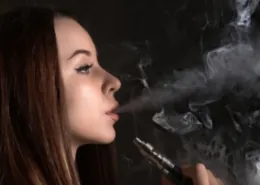Major Tobacco Companies Lead Vape Imports in Peru Amid Low Regulation
In recent years, Peru has witnessed a significant rise in tobacco and vape imports, with around 140 companies bringing in products worth over USD 20 million from 30 different brands in the last six years. Amidst a context of low regulation, major tobacco companies such as British American Tobacco (BAT) and Philip Morris have emerged as leading importers of e-cigarettes, expanding their market presence in the country.
BAT, the manufacturer of Lucky Strike cigarettes, has established itself as the top importer, accounting for 20% of the total vape arrivals in Peru. The company’s Vuse brand e-cigarettes, manufactured in China by Smoore International Holdings, have gained popularity in 59 countries, including Peru, Colombia, and Paraguay, due to favorable regulatory environments.
Philip Morris Enters Peruvian Vape Market with Veev Brand
Philip Morris, known for its Marlboro and L&M cigarettes, has also made a notable entry into the Peruvian vape market this year. Despite its late arrival, the Swiss company imported its Veev brand e-cigarettes worth USD 311,000 between January and November 1, 2024, securing a position among the top 11 importers in the last six years.
Veev Now, a variant of the Veev brand, offers e-cigarettes with 500 and 1,800 puffs in various flavors such as mint, blue raspberry, blueberry, strawberry, watermelon, and mango. The products are manufactured by Kaival Brands Innovations Group, based in Florida, USA, although customs records indicate China as the country of origin.
Peruvian Market Attracts Diverse Range of Importers
In addition to BAT and Philip Morris, the Peruvian vape market has attracted a diverse range of importers, with 137 other companies bringing in e-cigarettes and refills. These include specialized vape shops as well as businesses primarily involved in the restaurant industry or sports equipment sales.
The lack of comprehensive regulation in Peru has allowed for the influx of over 30 e-cigarette brands this year alone, featuring a wide variety of presentations, flavors, and aromas. In contrast, 35 countries worldwide have completely banned the sale of vape products.
Health Concerns and Youth Vaping Prevalence
Joel Collazos Carhuay, a specialist from the Ministry of Health (Minsa), warns that evidence suggests many adolescents who start with vaping end up also smoking cigarettes, undermining the tobacco companies’ argument that e-cigarettes serve as a smoking cessation aid.
“It doubles the probability of smoking conventional cigarettes in the adolescent population, even up to 30 years of age,” Collazos Carhuay explained to OjoPúblico. “Moreover, although some liquids [for vapes] claim to be nicotine-free, studies have found that substance present. Therefore, that claim is not entirely accurate.”
In Peru, over 6% of individuals between the ages of 13 and 15 consume nicotine through e-cigarettes. The country recently approved a ban on the sale of these products to minors, set to take effect in 2025.
As the debate surrounding the regulation of vape products continues, the Peruvian market remains an attractive destination for tobacco companies and importers alike. However, the potential health risks and the growing prevalence of youth vaping raise concerns about the need for stricter regulations to protect public health.
- UK Considers £100 Fines for Vaping at Outdoor Bus Stops - July 29, 2025
- Spain Galicia to Ban All Vape Sales and Use for Minors - July 29, 2025
- Poland to Tax Nicotine Pouches & Other Vape Products from Aug 1 - July 29, 2025







